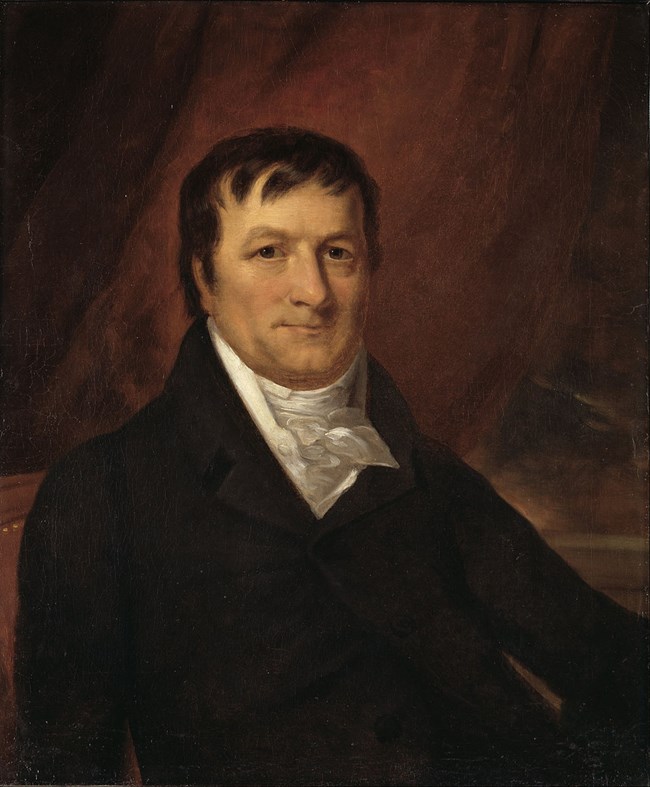Last updated: June 12, 2020
Article
Pain Medicine for the Lewis and Clark Expedition

Photo: John Jacob Astor portrait by John Wesley Jarvis, about 1825.
First, let’s look at how the Corps of Discovery dealt with pain. Meriwether Lewis, at the direction of his medical advisor, Dr. Benjamin Rush, put together his medicine supplies in the summer of 1803. Assuming that there would be plenty of pain to deal with throughout the journey, he included topical analgesics such as gum camphor, tragacanth, and calamine ointment for skin problems.
But for more significant pain and “excessive nervous stimulation,” Captain Lewis purchased a half pound of the finest Turkish opium he could buy, as well as laudanum (an alcoholic tincture combining whiskey and about 10% opium. Of course, there was also the 30 gallons of medicinal wine and the barrels of whiskey.
Opium, however, was the strongest drug in Lewis’s medicine chest. It was first introduced to China by Turkish and Arab traders in the late 6th or early 7th centuries. Its use grew substantially by the 19th century when opium smoking became more popular (but illegal) in China and around the world.
This is where John Jacob Astor, the highly praised fur-trading multi-millionaire enters our story. It seems as his fur business began to boom, so did his interest in Chinese goods, including tea, silks, and opium. Astor smuggled it into the United States between 1816 and 1825. Once the drug was in the country, he wasn’t afraid to let the marketplace know because he often advertised he had it for sale in the “New-York Gazette and General Advertiser.”
By selling opium, Astor was fueling an international problem that would reach epidemic proportions during the mid-1800s. When Astor died in 1848 he was worth an estimated 20 million (about $650 million in today’s dollars). However, it’s not known how much of his wealth is attributed to his drug smuggling business.
